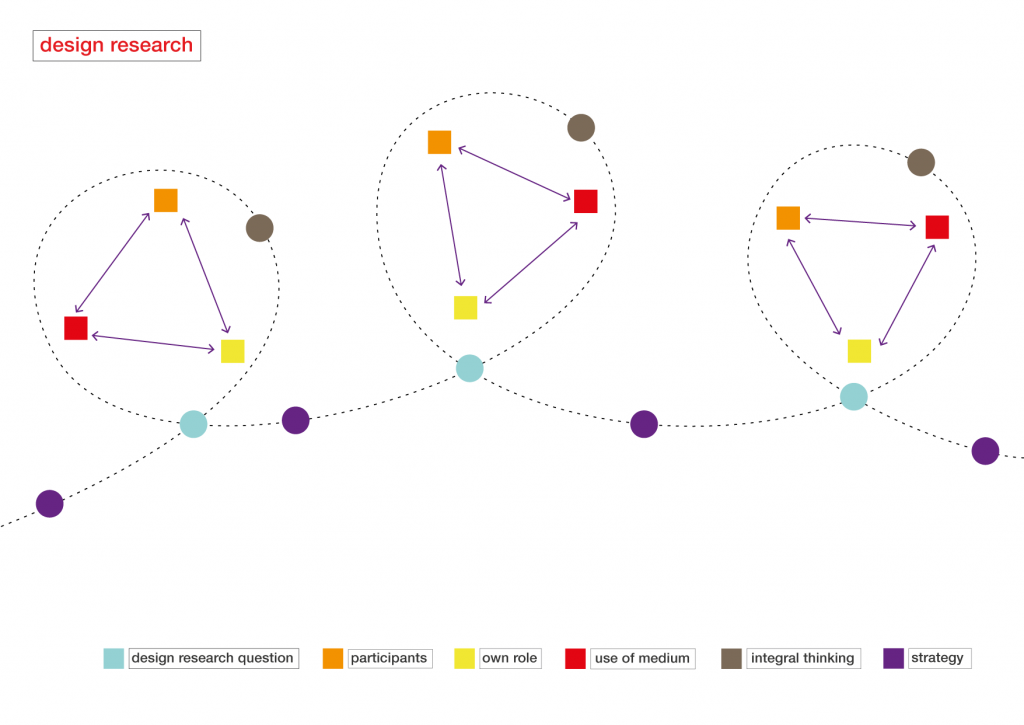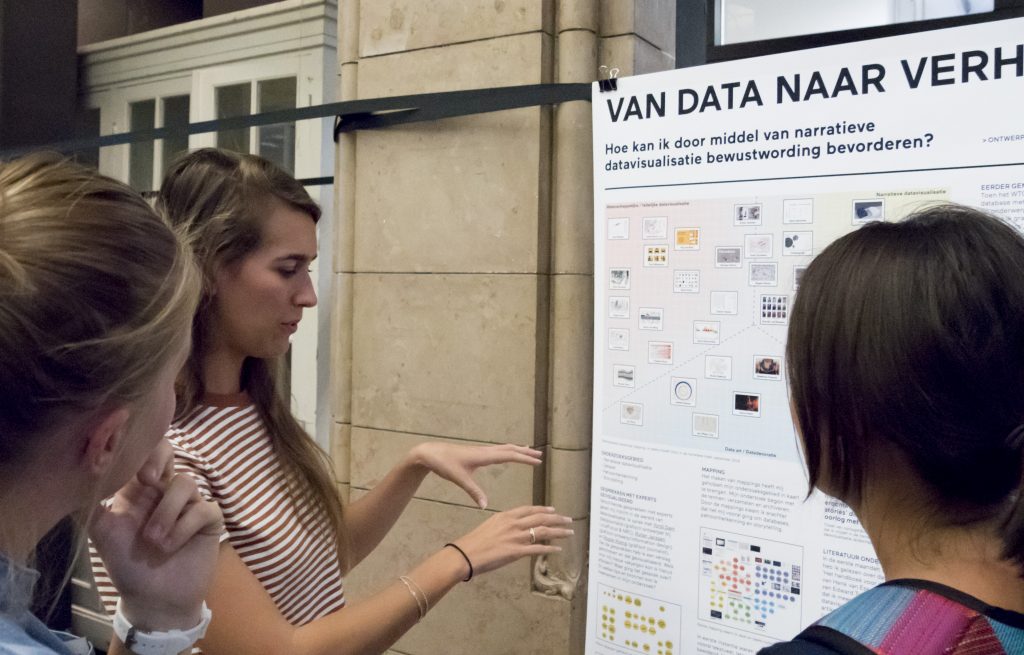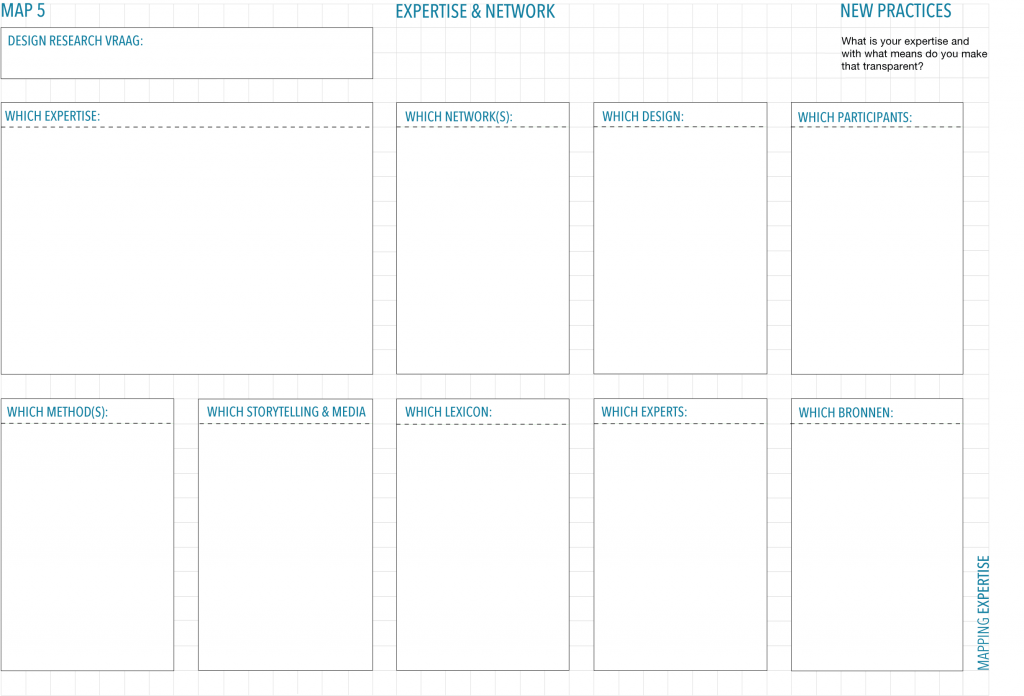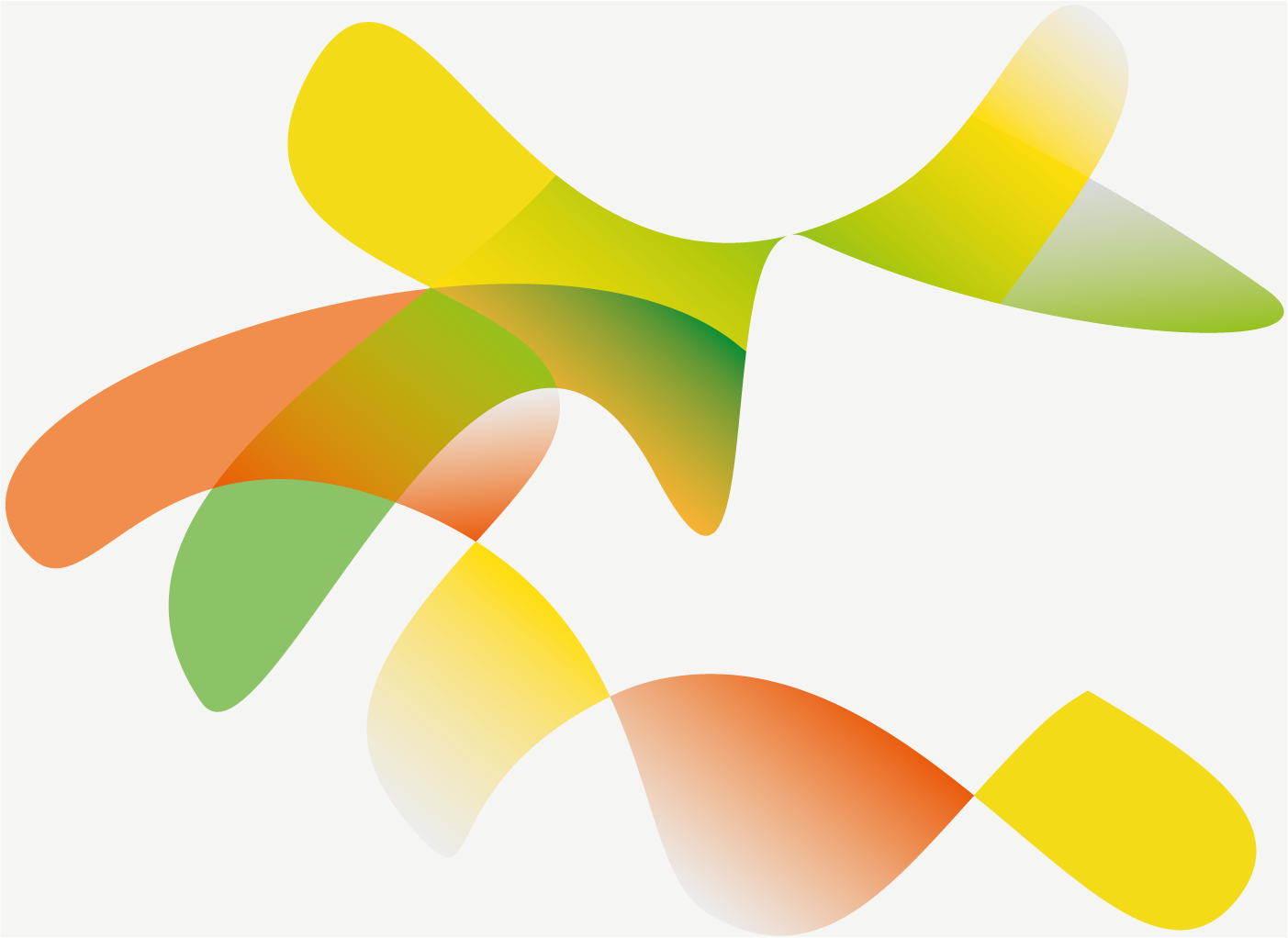Educational vision Master Design
Positioning of the Master Design as a study programme
As a study programme, we are in a changing field. We occupy a specific place in the domain of master’s programs. Because we focus on the student’s own design question, we make room for the engagement that we see in current design practice among many designers, but also for authorship.
The methods that we give the students to conduct designerly and in-depth research into their design question together with participants support this. Each student maps out a personal path and contributes in his/her own context to designed solutions for specific issues. By working on this for two study years, they lay a solid foundation for their new professional practice. When they graduate with us, designers have developed their own methodology of design research and reflection in a specific context. In addition, through their design request, they found a place as experts in a new, meaningful network.

Docententeam
Our teaching team consists of Sietske Klooster, Jop Japenga and Jan Belon from the Afdeling Buitengewone Zaken, Linda Meijer-Wassenaar, Moniek Driesse, Harma Staal and Hanneke Briër. We regularly invite guest lecturers.
International perspective
What stands out is that the design research of our students is context-bound, but that the network in which they acquire and share knowledge is worldwide.
This is in line with our vision, which sees the profession as explicitly international. We closely follow developments within the Design Research Society, participate in Elia meetings and work together with the Master Design of the Hochschule der Künste Bern.
In addition, our tutors bring international networks with them through their own practice and design research. In this way, the position of the study programme in the broader field is constantly monitored and, where necessary, refined. We continuously translate our current practical, methodical and theoretical knowledge into our education.
In September 2020, our (previously Dutch-taught course) became an international classroom, which means that we will be offering workshops and study materials in English. This makes us accessible to designers from all over Europe. It is important that, as was the case before, we give students the opportunity to do their storytelling in Dutch or English, depending on what their context requires. You can also see that in this website.
Vision on learning
Our course has its own methodology, linked in three learning lines: Design Research, Storytelling and New Practices. Our curriculum offers workshops, lectures and coaching sessions in which the changing perspectives within this methodology are continuously discussed. There has always been talk of collaboration with participants.
In four semesters, the students work on increasing independence. In the first semester, they explore their design question with methods offered by the study programme. They find first answers to underlying questions. In the second semester, they define themselves by choosing the methods that suit them best and tweaking them to their will. In the third semester, they will become firmly established in their approach and deepen the answers to their design question, in order to position themselves in their network with their own methodology and corresponding designs in the fourth semester.
Their own expertise grows over the course of the four semesters. While at first they mainly deal with questions in their context and network, in the second half of the study they are increasingly recognized and invited themselves as experts. This is how they position themselves as a professional in their new practice.
Competencies
The frameworks of the programme are based on the competencies that have been agreed (inter)nationally for art and design at master level.
We have translated the national competencies into a set of our own criteria, distinguishing between semester levels and professional acting. This professional performance is specifically described, such as asking (design) questions that you research through design and in-depth methods or developing a process that does justice to all participants relevant to your design research. This performance is then examined at the level: is it exploring (semester 1), defining (semester 2), deepening (semester 3) or that of an independent and critical expert (semester 4). These semester levels follow the double diamond that is known in the design world as a representation of the design process: from diverge to converge, and again. Our final level requires independence, as well as a clear foundation for the design research and the choices that answer the design question, and relevance to a larger context.
Feedback and assessment
We guide our students on their own development. Feedback is important here. There is a continuous line of the feedback we give them during workshops and the assessments at the end of each semester. With our current practical experience in mind, we respond from the framework of our study programme to the steps that students take and the questions they have about them. The students’ own elaboration plays an important role, in that sense that everyone’s design research requires a specific approach. Professional performance is to a certain extent general, but its interpretation is personal and authentic for every student.
Methodiek Master Design

The MD circle represents our methodology of Design Research, Storytelling and New Practices. In this circle, the student with his/her own design question and the resulting sub-questions are central. Surrounding this are the methods and media that are important within each of the learning pathways. In addition, there are lemmas such as role, tell & show and value & participants that show the specific content of the course.
Ultimately, each student finds his/her own method in this circle by choosing, tweaking and supplementing them. The areas of color can be read as the own paths of specific students, through design research, storytelling and new practices.
Learning line Design Research
For our students, everything starts with framing and redefining their own design question. They translate that question into sub-questions, the start of iterative design research. In each iteration, conducting research by design in context is central: the student, together with participants, discovers (partial) answers to the design question. In addition, they fathom the context of their question through in-depth research, reading theoretical or scientific literature, attending lectures and conferences and conversations with experts.
In this way they discover what their design needs, when it works, where and how it can be realized. Iterations and in-depth research intertwine, provide knowledge, nurture each other and raise new questions. In the course of the design research they make their questions and approaches more specific, and they find their personal strategy of doing design research. Iterations with well-designed material, supporting scenarios and specific participants lead to relevant knowledge and designs.

Learning line Storytelling
Our students use storytelling to reflect on what they do and to tell others what it is about. They reflect alone and with others on the material that they collect during their design research, they search for answers to their questions and ultimately arrive at substantiated (design) choices. Including their participants in the creation of a design requires an open way of telling. Ultimately, of course, their designs convey everything they want to share and cause. In addition, they tell at all times about what drives them, what they have in mind, which choices they think are the right ones. They do this in presentations, but also in various forms of the visual essay. What these forms in any case have in common is that image and text are equivalent means and that medium and design carry the story.

Learning line New Practices
Our students relate to new practices in the creative domain within the study programme. They contribute to this by developing a new, relevant professional role in their own practice. Their design research makes them experts who can position themselves firmly in new networks through targeted forms of storytelling. They developed these networks by working together, with peers in co-creation, with experts through the exchange of knowledge.
Students learn what value they can attribute to the knowledge and design that results from their design research. They translate that value into an impactful vision of their new practice: what are they going to do, who will they involve in which context, how do they include that in the network that is relevant to them? We help them to establish and propagate this new position.

Designers who do the course
The designers who come to study at our master are all looking for deepening of their own practice. In general, they are in their thirties, have a solid professional footing and know what they find important in their profession. In their own practice, they found a design question they want to research and topics that have interested them for some time.
We also offer space to bachelor students who have done excellent design research and want to continue with it.
The quest for innovation in their own practice is often an important motivation for designers to want to do our course. This is the case for those who, as designers, became increasingly interested in certain aspects of their profession, but also for those (about a quarter of our students) who have a dual practice, as a designer and as a teacher. Although the demand for bachelor teachers to obtain a master’s degree certainly plays a role in their choice for our study programme, we see that this is never the first reason for them. Their teaching position does offer them the opportunity to research their design question together with their own students, the professionals of the future, and thereby connect these young professionals to new practices.
Our students come from different design disciplines and thereby driven design questions. We also occasionally allow students who are not designers, but who do show a strong affinity with design in their work. Each of them brings qualities, knowledge and questions that are specific to their own discipline.
Meaningful alumni
When designers graduate, they complete the first phase of their new practice. From that moment on their own methodology is decisive. They continue on the chosen paths, find new places to work on their topics. They deepen the contexts and networks they developed during the master from their new role as experts in their field. In their new practice, the results of the Master Design become visible. Moreover, they often return their new knowledge, for example as a guest lecturer, to the Master Design.
Future
The Master Design contributes to a changing design practice in which design research into social, ecological and technological questions, working with participants as author and contributing to changes in contexts are important. The recognition of this approach, and the place of the study programme in developing it, is a goal in itself: so that designers can look for answers to the questions people have together.
You want to study with us?
Then look at
www.wdka.nl/programmes/master-design
or contact us through wdka.masterdesign@hr.nl




